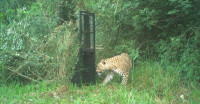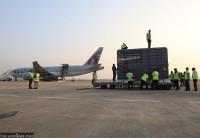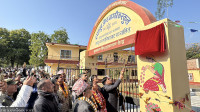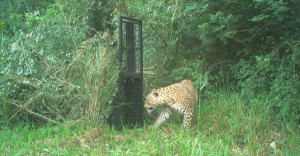Lumbini Province
Devotees from Sri Lanka, Australia visit Lumbini to donate robes to monks
Kathin Dan is considered one of the most sacred rituals in Theravada Buddhism.
Manoj Paudel
Standing on the sacred soil of Lumbini, non-resident Sri Lankan businessman Hernta Herath, who lives in Australia, folded his palms and bowed deeply.
“Two years ago, I made a vow to perform Kathin Dan here (Lumbini). To be able to return and fulfil that wish today makes me feel truly blessed,” he said.
Herath, who runs a business in Melbourne, rose at dawn, bathed and dressed in white before taking part in a special Kathin Chivar Dan, a robe-offering ceremony that marks the end of the three-month monastic rain retreat known as Vassa in Pali language. At sunrise, he offered the hand-woven yellow robe at the Maya Devi Temple after prayers and later presented it to monks at the Nava Maitri Mahavihar.
“It is a great honour to bring the Kathin robe from Sri Lanka—where we also keep a relic of the Buddha’s tooth—and offer it at his birthplace,” he said. “This is a profound act of faith and merit.”
The Kathin Dan is considered one of the most sacred rituals in Theravada Buddhism. Like Hernta, Rabindi Herath, originally from Kandy in Sri Lanka and now based in Australia, described the experience as spiritually uplifting.
“The ceremony cultivates compassion and loving-kindness,” she said. “To perform this once-in-a-lifetime offering while still young feels like an extraordinary blessing.”
A group of 15 Sri Lankan devotees—eight non-resident Sri Lankans from Australia and seven from Sri Lanka—arrived in Lumbini for this year’s Kathin Dan. “We wanted to celebrate the end of the retreat at the Buddha’s birthplace,” said Rabindi. “It connects us more deeply with our faith and our heritage.”
Lumbini, the birthplace of Lord Buddha in Rupandehi district, has seen a growing flow of pilgrims from Sri Lanka and Southeast Asian countries in recent years, especially for major Buddhist festivals.
Just last week, 47 Sri Lankan devotees offered robes at the Mahabodhi Society of India’s Lumbini branch. A total of over 100 others have performed robe donations at various monasteries, including the Royal Thai Monastery, Myanmar Golden Temple, and Sri Lankan Mahavihar this year.

During Vassa, monks live under strict discipline for three months—from the full moon of June to that in October—refraining from travel, meditating daily, and following the 227 rules of the monastic code.
“The monks dedicate the season to inner reflection and teaching,” said Khamesi Guruma, a senior nun in Lumbini. “After the retreat ends, devotees express gratitude by offering new robes, symbolising renewal and generosity. That’s why the ceremony is called Kathin Dan—it’s not easy, but deeply rewarding.”
The festival lasts two days. On the first evening, monks from Nepal, Sri Lanka, Myanmar, Japan and Thailand chant the Mahapritran verses at the Maya Devi Temple, creating an atmosphere of serenity. The next morning, devotees carry the ceremonial robe, decorated with flowers and placed in a sacred chest, to the temple for worship before offering it to the monks. The temple complex, including the Ashoka Pillar and ancient ruins, is festooned with garlands. Processions with Sri Lankan Kandyan drums, regarded as sacred instruments akin to Nepal’s panche baja, accompany the rituals.
“The drum is more than music—it’s a symbol of devotion,” said Maitri Mahasthavir, former president of the All Nepal Monk Federation. “That’s why pilgrims bring it from Sri Lanka to play here at the Buddha’s birthplace.”
On the second day, processions return to the monasteries, where monks confer precepts, deliver sermons, and receive offerings. Devotees present chivar (monk’s robes), alms bowls, and the Ashta Parikar—eight requisites including shaving tools, garments, thread, a needle, and an umbrella. Afterward, the monks are offered meals in a gesture of communal harmony.
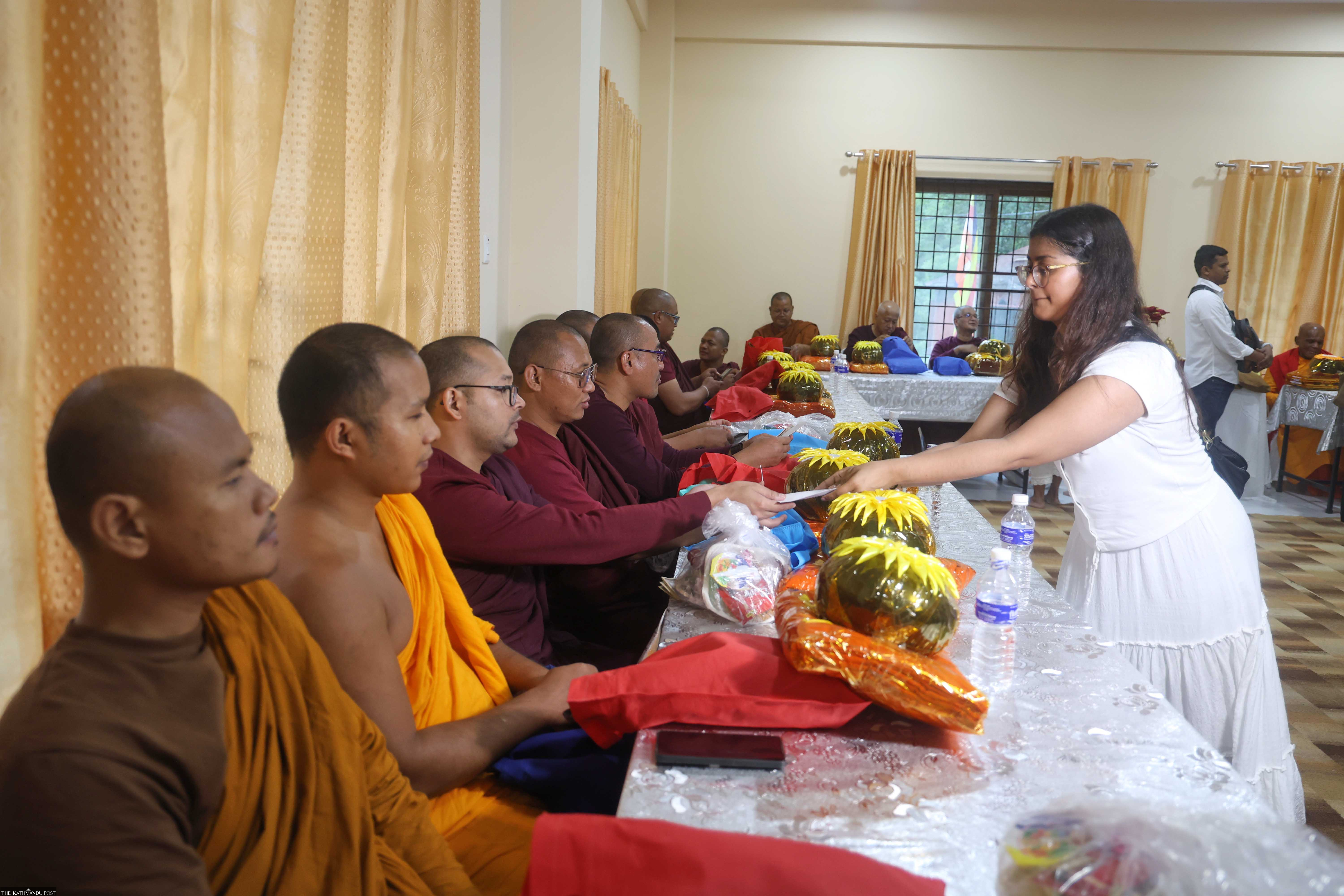
“The Kathin robe is offered collectively to the monk association,” explained Siri Vajira, associate professor at Lumbini Buddhist University. “Only monks who have completed the retreat in full discipline are eligible to receive it. The robe represents gratitude for their spiritual dedication.”
The ritual also carries doctrinal meaning. According to Buddhist texts, when the Buddha first instituted the rain retreat, he instructed monks to stay in one place to avoid harming living beings during the monsoon. Upon completion, lay followers expressed their devotion by sewing and offering new robes—a tradition that continues more than 2,500 years later.
Lumbini—revered as the Buddha’s birthplace and a UNESCO World Heritage Site—has become a global centre for Buddhist devotion. Temples representing over a dozen countries line its monastic zone, each bringing unique cultural traditions to shared rituals.
Basna Walpit, a Sri Lankan devotee, said she felt a sense of fulfillment attending the event. “For us, performing the robe-offering ceremony in Lumbini completes a spiritual circle,” she said. “It’s believed that such an offering fulfills one’s aspirations.”




 16.12°C Kathmandu
16.12°C Kathmandu
